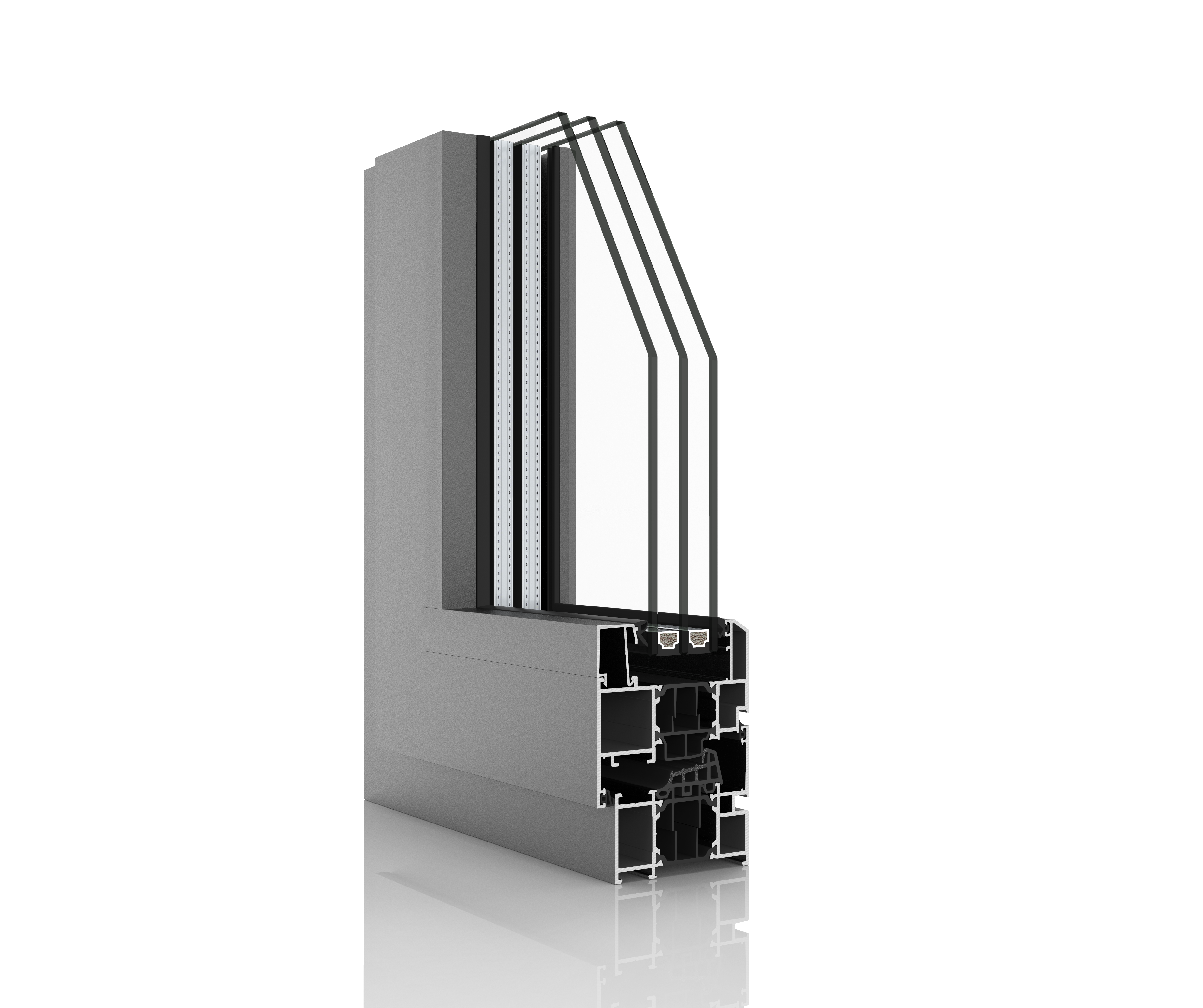Choosing the right glass for windows and doors is essential for both aesthetics and functionality. The type of glass you select can impact the energy efficiency, security, privacy, and overall look of your space. To meet the energy efficiency needs of your home and climate, you can choose from a variety of insulated glass options, including standard double-pane or optional triple-pane insulated glass, as well as surface coatings that help control light and heat entering and leaving your home. Understanding glass options helps ensure that you pay for the energy efficiency you need and don't choose options that may not pay off over time.
Glass Options

Double Glazed
Our standard glass is double glazed: both layers are coated with a LOW-E coating and insulated with argon gas. The LOW-E coating of double glazed and the gas-filled insulating space between the glass layers significantly reduces energy costs compared to single glazed.

Triple Glazed
Triple glazd consists of three panes of glass coated with a LOW-E coating. Argon gas is used to insulated between the two panes of glass. Provides higher thermal insulation and energy efficiency than single or double glazed. Of course, the price will be a little more expensive than double glazed.

Double Glazed VS. Triple Glazed
The choice between double-glazed and triple-glazed windows depends on your specific needs and circumstances. If you live in a mild to moderately cold climate, double glazing offers a good balance of cost, energy efficiency, and comfort. However, if you reside in a very cold or noisy environment, or if energy efficiency is a top priority, investing in triple glazing may be worthwhile for the enhanced insulation, comfort, and sound reduction it provides.
Is Triple Glazed Suitable For You?
It is important to consider the energy efficiency of the entire window, not just the amount of glass.
Windows that are poorly designed or installed, or made of inferior materials such as vinyl, may not be energy efficient regardless of the number of panes of glass. The material will shrink and expand in hot and cold cycles, and the seals will begin to fail. Once the seals fail, no matter how many pieces of insulated glass there are, the energy efficiency that the window claimed to be when it was new will be greatly diminished. Ask our window & door professional for help choosing the right package for your home and climate.
LOW-E Glass

LOW-E glass, or LOW-emissivity glass, is designed to reduce the amount of heat that passes through it while still allowing light to enter. It has a special coating that reflects heat back to its source.
LOW-E glass is a smart choice for those looking to improve energy efficiency and comfort in their homes or buildings. By reflecting heat while allowing natural light to filter through, LOW-E glass helps maintain a stable indoor environment, reduce energy costs, and protect interior furnishings from UV damage.
The ENERGY STAR® program recognizes products that meet strict energy-efficiency guidelines to suit climates in different areas of the country, and Casa View Living offers products to meet climate and code requirements in every region.
LOW-E 1 coating is a good choice when you want maximum solar heat gain (or maximum heat transferring into your house from the sun) and radiant heating properties (keeping heat on the side of the glass where it originated). This type of coating is generally used in Northern climates where heating is prioritized over cooling. You’ll reap maximum benefits when windows with this type of coating are positioned to receive direct sun exposure.
LOW-E 2
The most common LOW-E coating since it works well across most geographic regions and climates.LOW-E 2 with two metallic coatings balances less solar heat gain and improved radiant heating properties.
LOW-E 3
Used in applications where solar heat gain may be a concern, LOW-E coating uses multiple metallic layers for radiant properties similar to LOW-E 2. This type of coating is most commonly used in Southern, sunny climates where cooling is prioritized over heating.
LOW-ERS
A higher performing Low E glass with significantly improved U Factors (ability to keep heat inside of your home). This coating is placed on the interior surface of the glass and can be touched. It is used in conjunction with Low E2 or Low E3 and helps reflect radiant heat back into the room. This means a slightly cooler interior glass surface since the heat is not absorbed by the glass. The cooler surface may see a bit more condensation in cold climates versus traditional Low E glass make-ups. Abrasive products should be avoided when cleaning the glass.
Decorative Glass Option:














Casa View Living offers a variety of decorative glass options to meet the unique needs of each project.
In addition, we offer special glass options, including glass to meet unique project needs such as acoustic insulation, high altitude, hurricane protection, etc., and you could consult with us further.

Casa View Living experts are experienced in working with architects, builders and homeowners on a variety of projects to ensure your vision becomes a reality.

